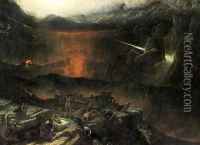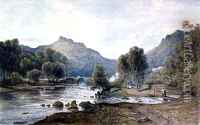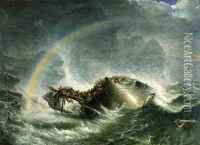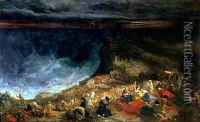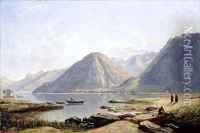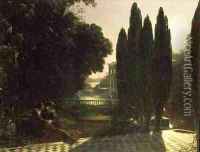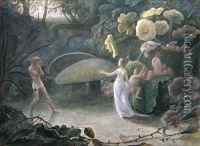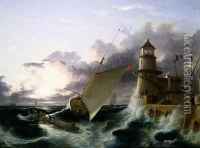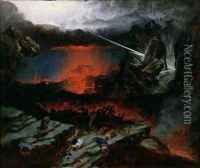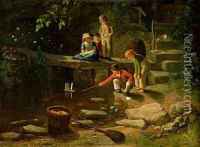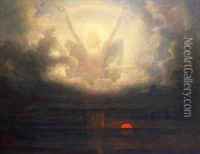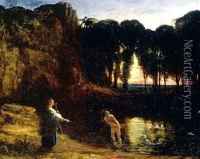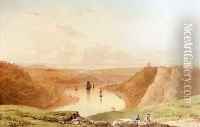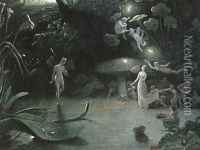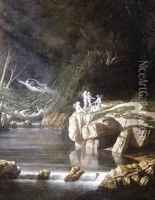Francis Danby Paintings
Francis Danby was an Irish painter born in the town of Killinick, County Wexford, Ireland, in 1793. He began his artistic career at the Dublin Society's drawing schools, where he studied from 1808 until 1811. His early work was influenced by the dramatic landscapes and seascapes of the Romantic period, a trend that would continue throughout his life.
Danby moved to London in 1824, where he became associated with a group of landscape painters known as the Bristol School. His work during this period was characterized by its use of dramatic lighting and sublime landscapes, often with a strong emotional or moral message. While in Bristol, he produced one of his most famous works, 'The Upas Tree' (1820), a powerful painting that depicted a deadly tree in a desolate landscape, symbolizing the destructive power of nature.
The artist struggled with financial difficulties and personal setbacks, which led him to move to Europe, spending time in Paris and then settling in Switzerland. During his time on the continent, Danby continued to produce large-scale dramatic landscapes, but with a broader range of subject matter. His later works often included historical or biblical themes, as seen in paintings like 'The Opening of the Sixth Seal' (1828).
Danby returned to England in the 1840s and continued to exhibit his work, though he never regained the prominence he once held. He was elected an honorary member of the Royal Institute of British Architects for his contributions to the aesthetics of landscape and his influence on the design of public parks and gardens.
Despite his struggles, Francis Danby's work was influential in the development of British landscape painting, and his dramatic scenes have continued to be appreciated for their emotional depth and technical skill. Danby died in Exmouth, England, in 1861, leaving behind a legacy that has been celebrated by generations of art historians and enthusiasts.
